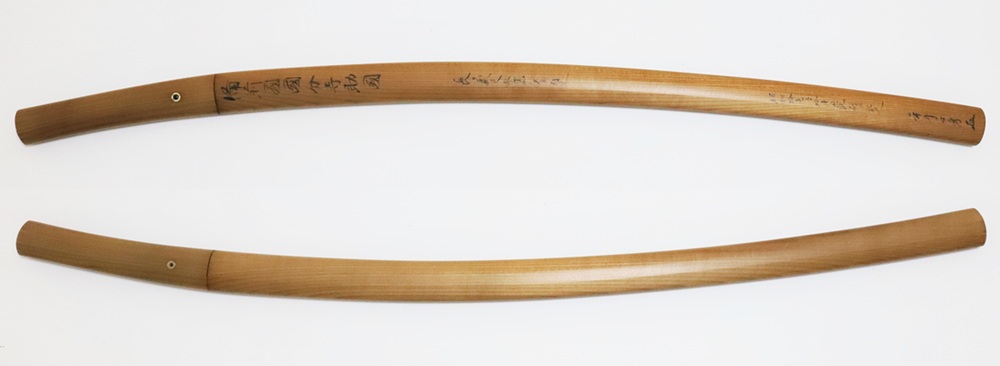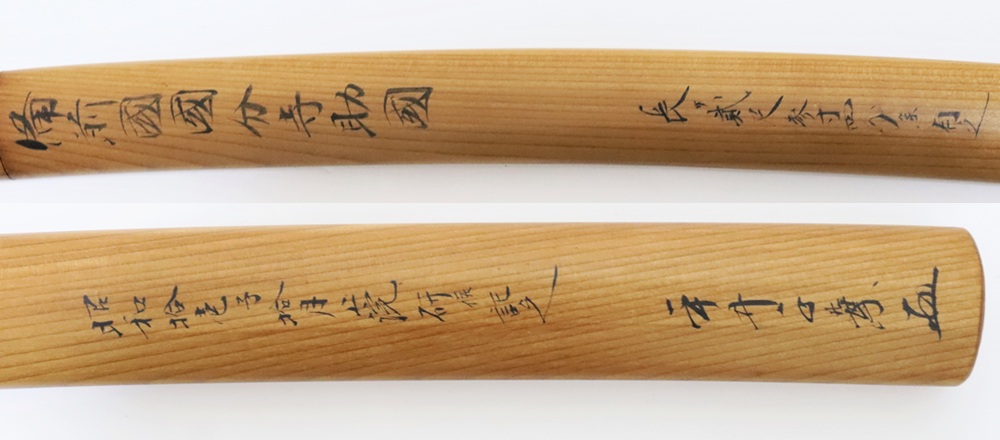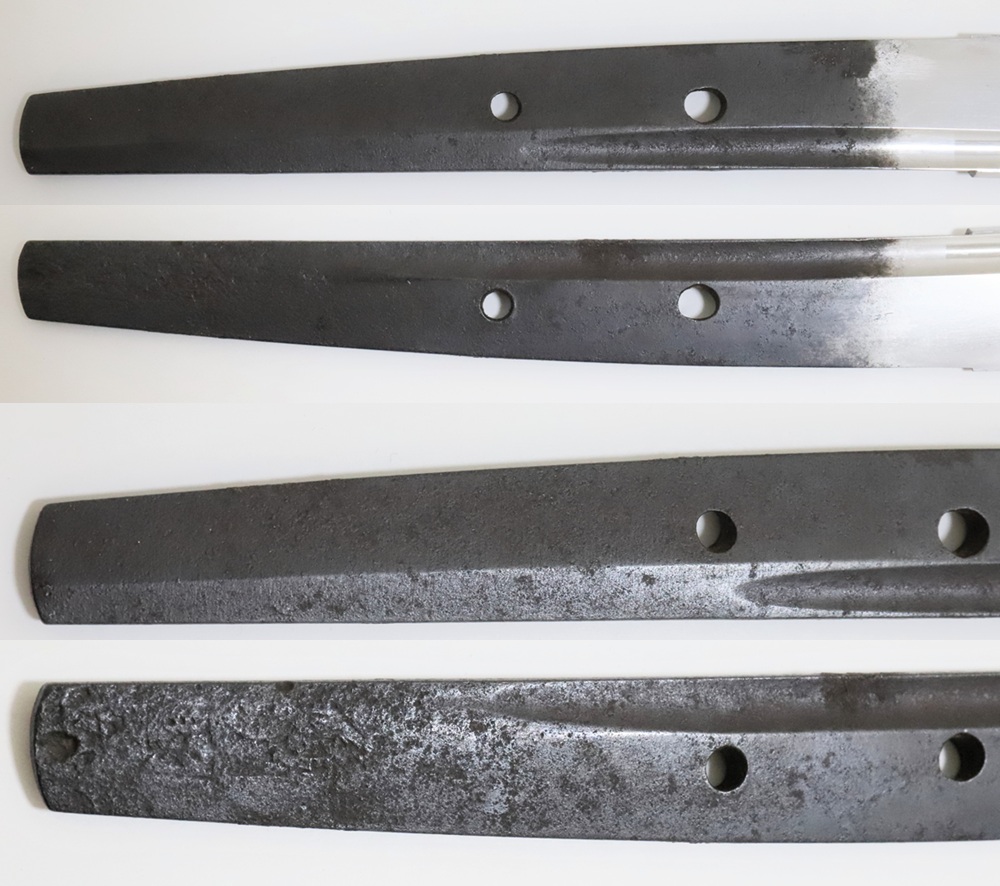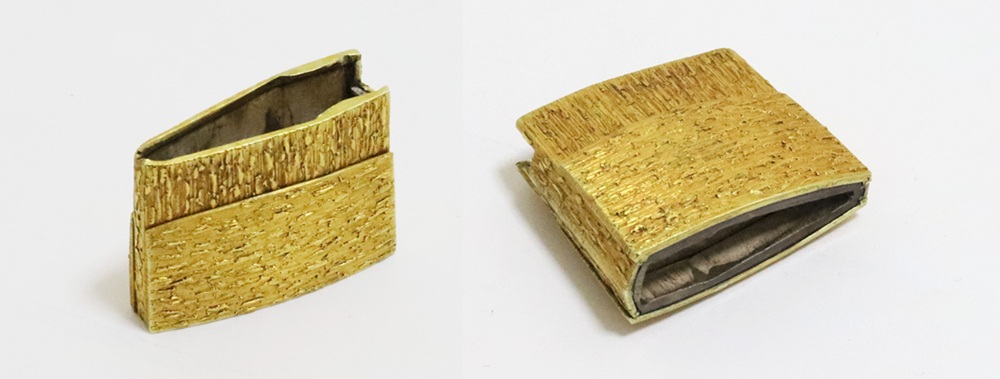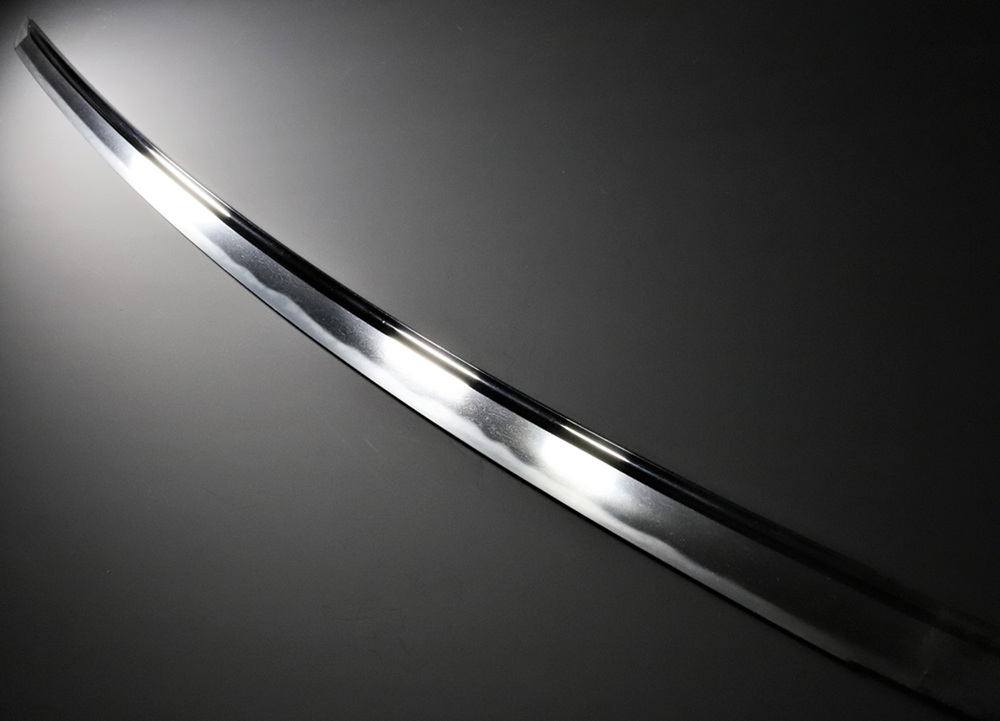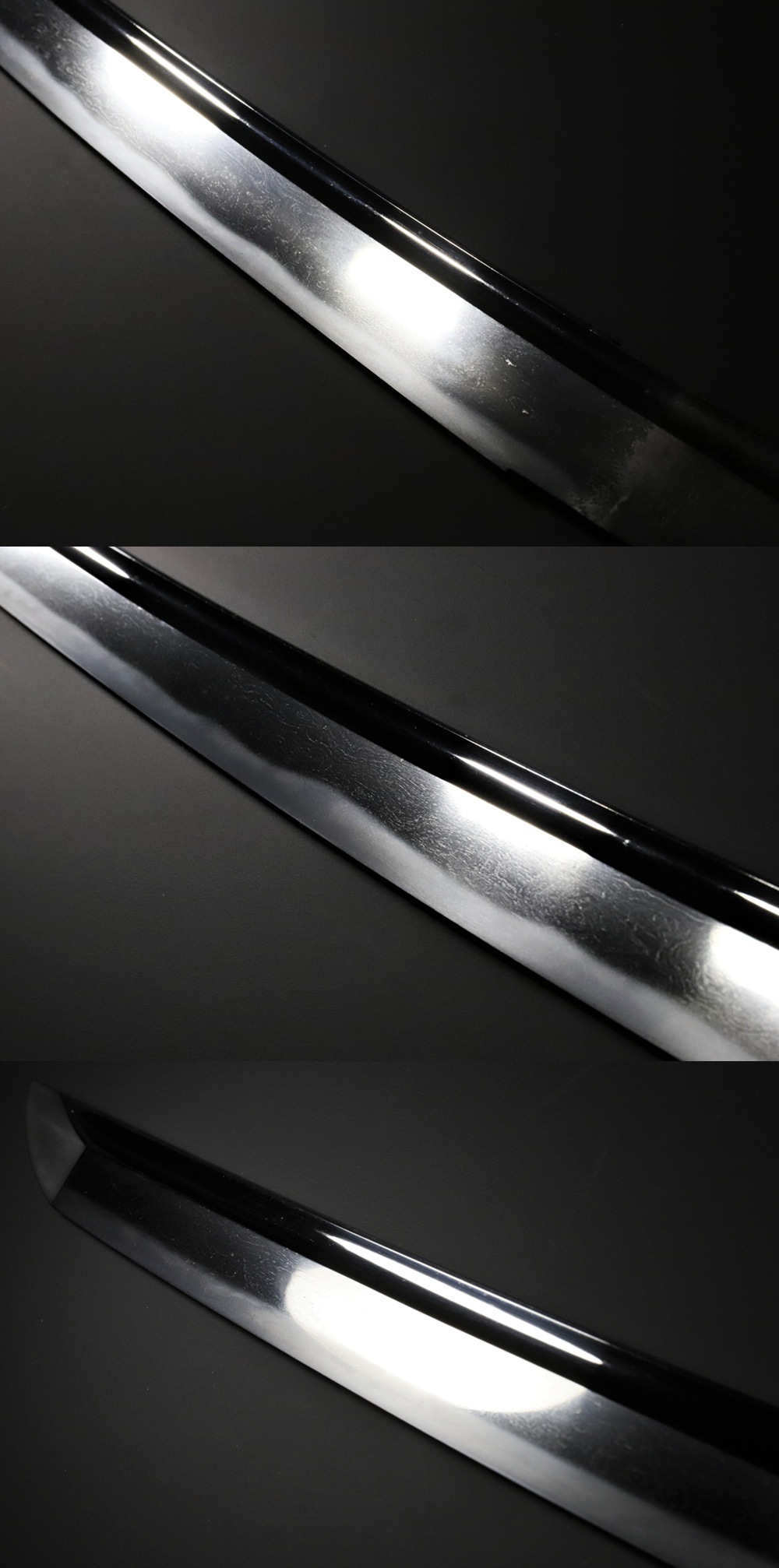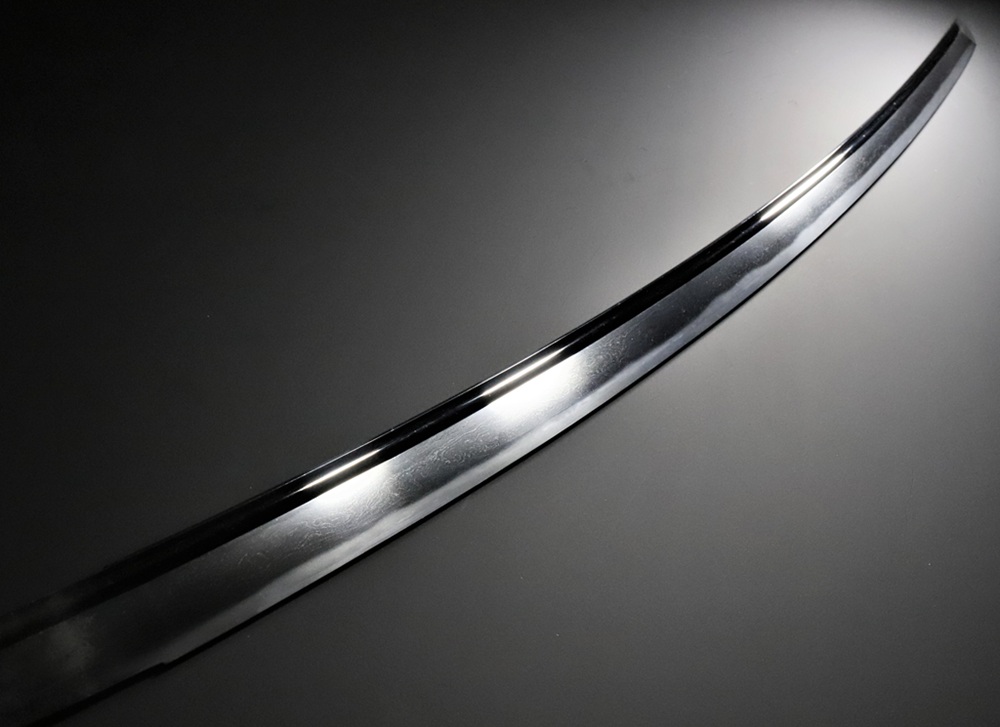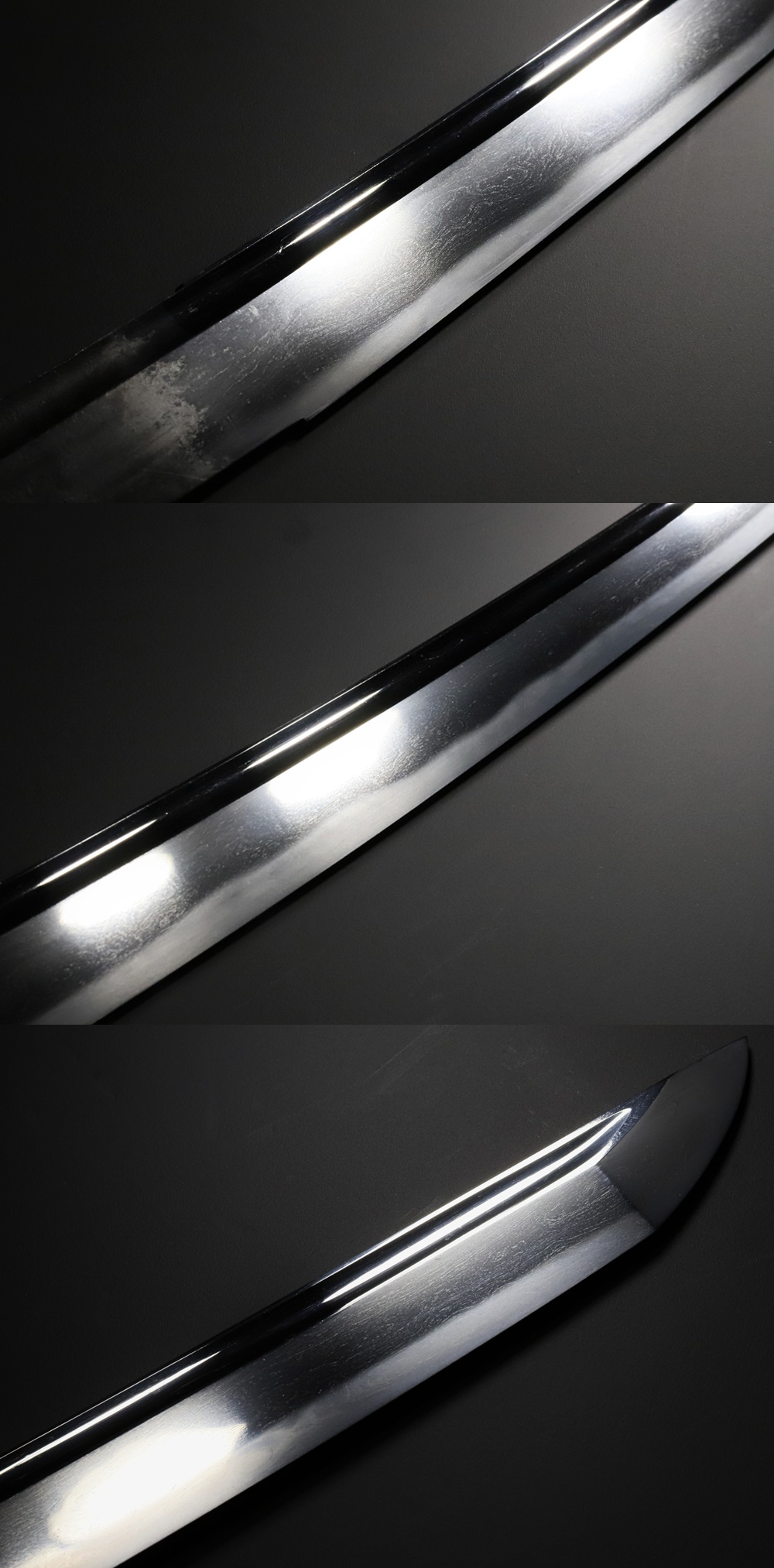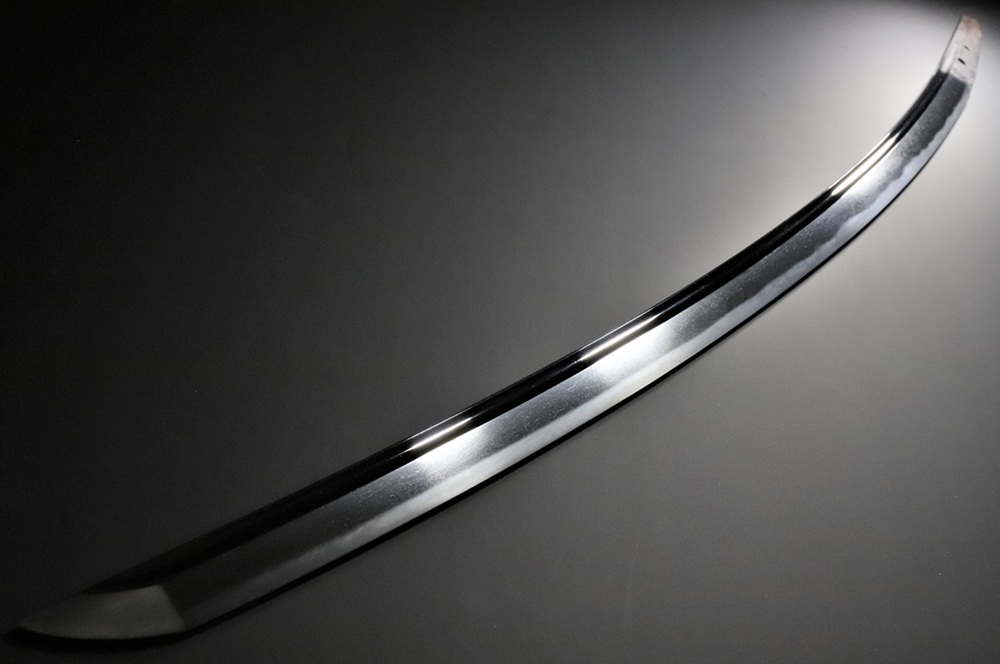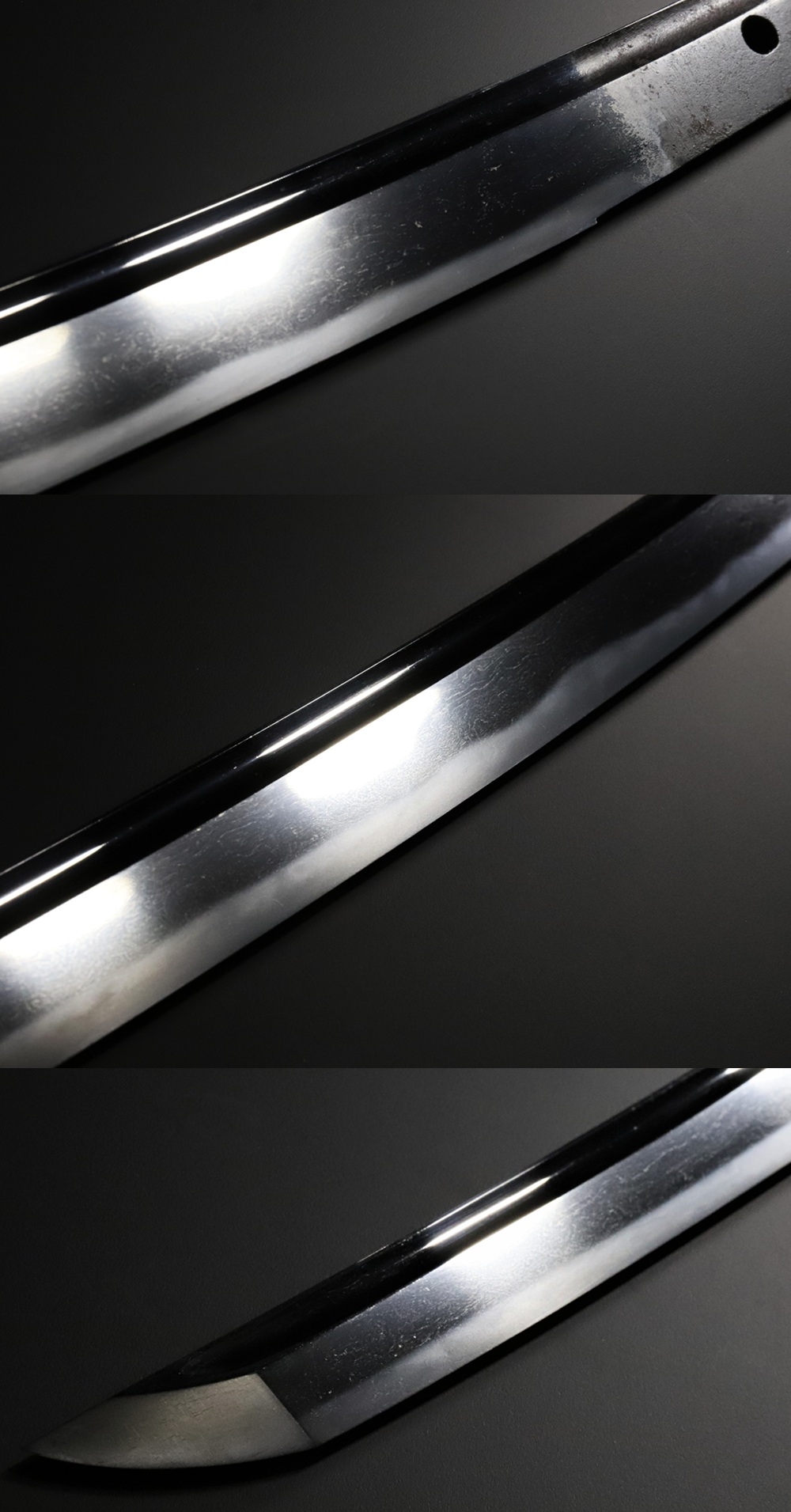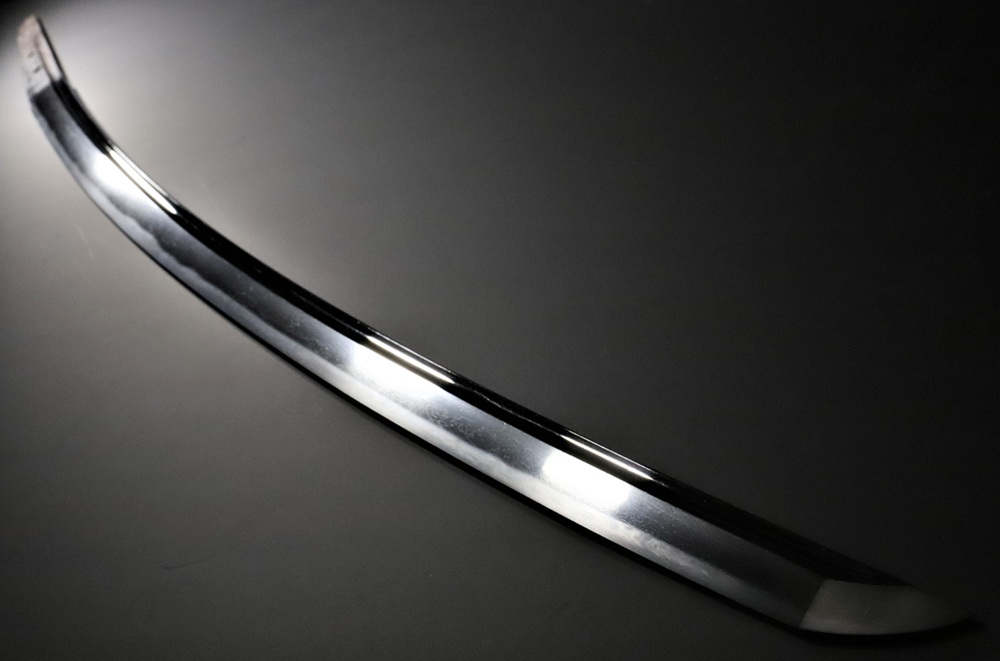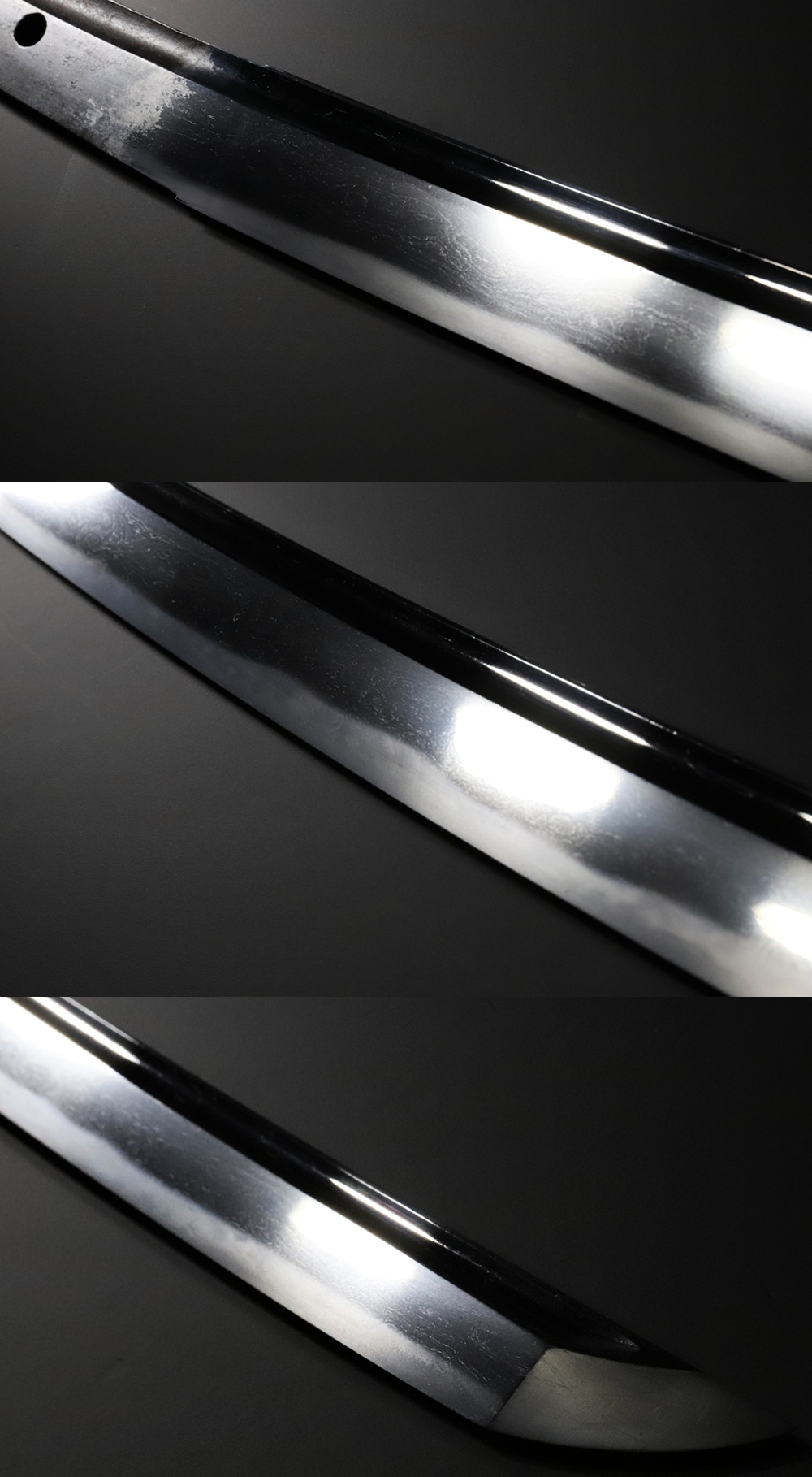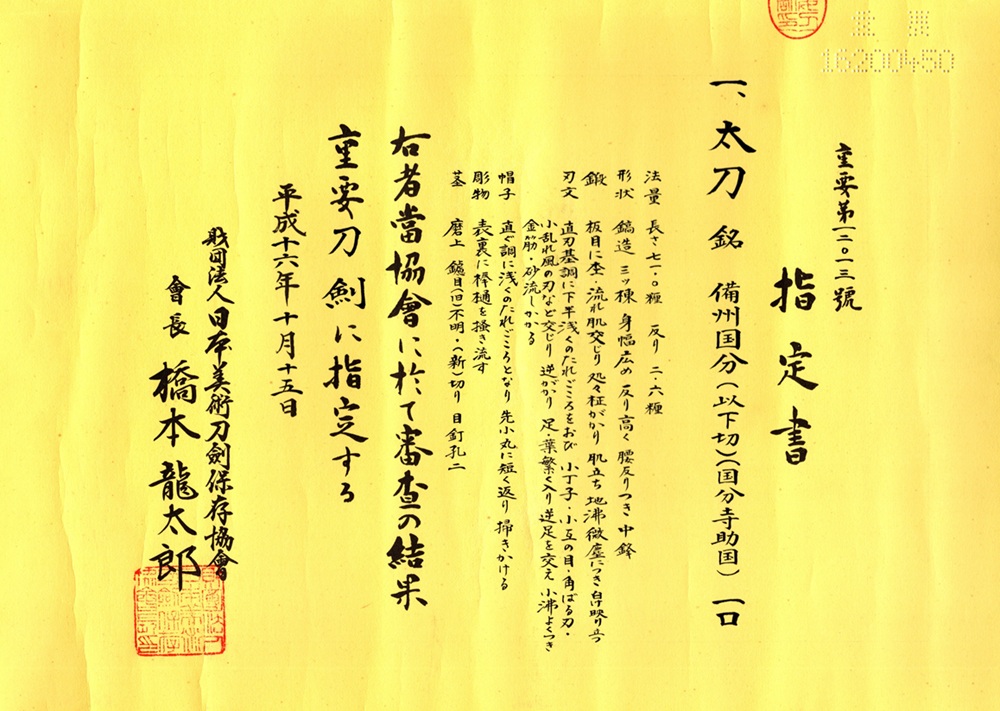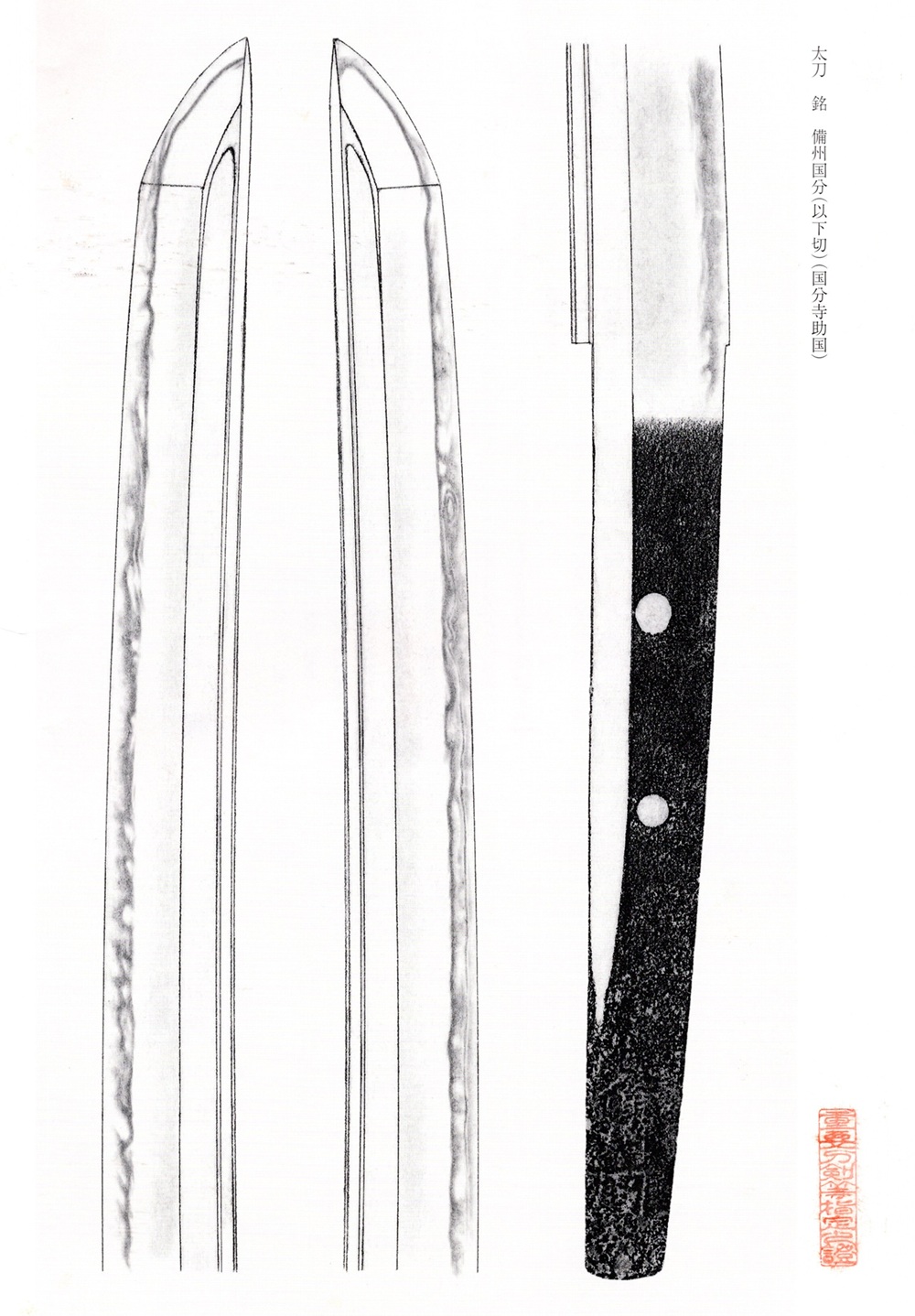
| Product No. KA-0752 備州国分(以下切)(国分寺助国) | |
|---|---|
| Mei |
Kokubun[ji Sukekuni] in Bishu(国分寺助国) Back: -- |
| Shape | Shinogizukuri Mitsumune |
| Region | Bingo Province |
| Era | Late Kamakura Period |
| Length |
71.1 cm 28.0 in |
| Sori (curvature) |
2.6 cm 1.0 in |
| Motohaba |
3 cm 1.2 in |
| Sakihaba |
2.1 cm 0.8 in |
| Munekasane |
0.6 cm 0.2 in |
| Status | Juyo Token |
| Certification Date | October 15, 2004 |
| Registration Authority | Tokyo |
| Registration Date | March 31, 1951 |
| Jihada (Metal pattern) | Itame and Moku, a bit Nagare-hada with lots of Jinie and Shirake-utsuri |
| Hamon (Temper line) | Suguha, a bit Notare including Ko-choji, Ko-gunome, Kakubaru-ha, Komidare with Ashi, Yo, Ko-nie, Kinsuji and Sunagashi |
| Engraving | Bohi on each side |
| Bōshi (Point / Tip) | Sugu shallow Notare, Komaru short turn with Hakikake |
| Nakago (Tang) | Suriage |
| Mekugiana (Rivet holes) | 2 |
| Habaki | Two part, silver base gold foil with Koke pattern habaki |
Price |
SOLD |
| This sword passed the Juyo Toekn shinsa in 2004 (50th time), made by Kokubunji Sukekuni [国分寺助国] . There is a large inscription reading "Bishu Kokubun" under the mukugi-ana/hole on the Haki-omote side, and the rest has been Suriage/shortened). Kokubunji Sukekuni was a swordsmith from Bingo Province who lived in the late Kamakura period (around 1326-1331). This Kokubunji Sukekuni Tachi has been Suriage, but still has a firm shape, and has a high curvature of the Koshi-sori and a powerful appearance. The forging has a mixture of mokume and nagarehada, with fine ji-nie, and shirake-utsuri. The hamon is based on a sugu-ha, lively with a variety of blade patterns, including gunome, kochoji, and kogunome, numerous saka-ashi, ko-nie, kin-suji and sunagashi creating variation. As the features share similarities with the Sukekuni sword (Important Art Object) from the first year of the Gentoku era (1329). Both the surface and the hamon are in good condition, making it a valuable resource for understanding Sukekuni's craftsmanship. The sayagaki (1936) by Hirai Chiba (father of Living National Treasure Hon'ami Nisshu), a master polisher, is also valuable. |


